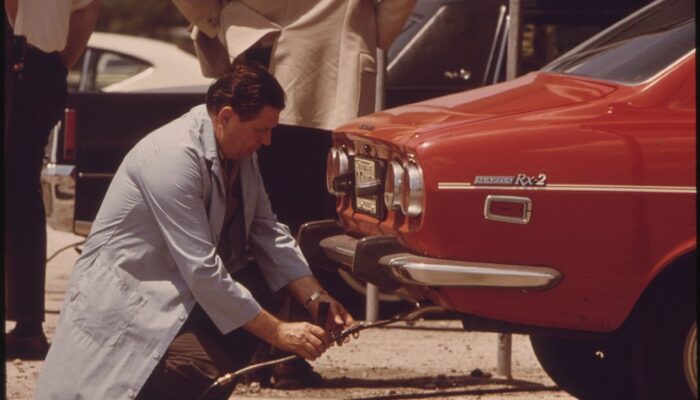
Last year the European Commission appointed a panel of world leading scientists to advise on key science policy issues. In November, the panel issued their first recommendation report focusing on CO2 vehicle emissions. The month’s GeoPolicy post takes a closer look at this high-level advisory panel and the recommendations they have published.
In 2015, the Scientific Advice Mechanism (SAM) was established by the European Commission (EC) to improve research communication to policy officials. Previously, a Chief Scientific Advisor served this process, but after the position was discontinued in 2014 a crater was left in providing evidence-based policy in Europe. In response, EC President Jean-Claude Juncker, established SAM, which centres around a high-level panel of scientific experts who publish reports of topics of societal importance. These topics are chosen by the EC or suggested by the panel members themselves. SAM’s overall structure was covered in a previous GeoPolicy post entitled ‘GeoPolicy: 8 ways to engage with policy makers‘.
The panels’s first report, entitled ‘Closing the gap between light-duty vehicle real-world CO2 emissions and laboratory testing’1, was commissioned in the wake of the Volkswagen NOx emissions scandal in 2015. The report aimed to assess the scientific basis for improving measurements of light duty vehicle CO2 emissions, which approaches could be considered, and what additional scientific and analytical work would be needed to implement these tests.
The major findings say that developing further emissions testings, in both the laboratory and within the vehicles themselves, would significantly decrease the gap in measured levels. This test, known as the Worldwide Harmonised Light vehicles Test Procedure, will be a tougher standard for car manufacturers to adhere to and aims to be introduced across the EU in September 2017. In addition, a ban in awarding certificates to cars who have not been tested using the new method will be implemented. Finally, SAM’s panel recommend a review of the new procedure in 5 years to assess the improvements2.
SAM’s panel consists of 7 members (listed below). The geosciences are (loosely) represented by the newest panel member, Carina Keskitalo, a Professor of Political Science at the Department of Geography and Economic History at Umeå University. She researches into natural resource-use policy, in particular forestry and climate change adaptation policy. She replaced the UK Met Office’s chief scientist, Dame Julia Slingo, who served as a SAM member for one year.
High level group members:
- Janusz Bujnicki – Professor, Head of the Laboratory of Bioinformatics and Protein Engineering, International Institute of Molecular and Cell Biology, Warsaw (biology);
- Pearl Dykstra – Professor of Sociology, Erasmus University Rotterdam (social science);
- Elvira Fortunato – Deputy Chair – Professor, Materials Science Department of the Faculty of Science and Technology, NOVA University, Lisbon (material science);
- Rolf-Dieter Heuer – Former Director-General of CERN (particle physics);
- Carina Keskitalo – Professor, Department of Geography and Economic History (land-use and climate change);
- Cédric Villani – Director, Henri Poincaré Institute, Paris (mathematics);
- Henrik C. Wegener – Chair – Executive Vice President, Chief Academic Officer and Provost, Technical University of Denmark (epidemiology / microbiology).
The group aims to publish its second recommendation report on cybersecurity before the end of the year.
—
Sources / Additional reading
[1] – The SAM CO2 emissions report




